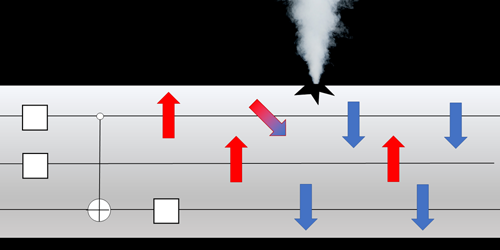Heat Leaks from Trapped-Ion Qubits
The Carnot limit defines the greatest possible efficiency with which any classical heat engine can operate. A quantum system’s dynamics is constrained according to a similar thermodynamics-inspired framework, with less efficient systems leaking more energy to the environment as heat. Now, Daniel Pijn and his colleagues at Johannes Gutenberg University Mainz in Germany and the Hebrew University of Jerusalem demonstrate a sensitive technique for measuring this energy loss [1]. The work is a step toward generalizing thermodynamics to quantum systems.
The team’s approach relies on observations tied to the basic thermodynamic concept of passivity, which requires that a quantum system’s energy cannot be changed by a reversible process acting on that system. To explore passivity-based bounds in a quantum system, the researchers employ a small quantum information processing device in which the electronic states of three calcium ions in a radio-frequency trap serve as three qubits. Two of the qubits exchange information through a gate in a quantum circuit. The third qubit serves as a controllable but unobservable environment that might or might not interact with the other two. Specifically, the two-qubit circuit is linked to the third qubit by an optional gate, the activation of which results from an irreversible exchange of energy. By measuring the final states of the two qubits in the circuit, the researchers can detect whether this optional gate has been activated, indicating the presence of a heat leak.
In future work, the researchers plan to increase their leak detector’s sensitivity so that it works for systems coupled to real environments rather than controlled but hidden qubits. Doing so could help to establish thermodynamic bounds for future quantum technologies.
–Rachel Berkowitz
Rachel Berkowitz is a Corresponding Editor for Physics Magazine based in Vancouver, Canada.
References
- D. Pijn et al., “Detecting heat leaks with trapped ion qubits,” Phys. Rev. Lett. 128, 110601 (2022).




